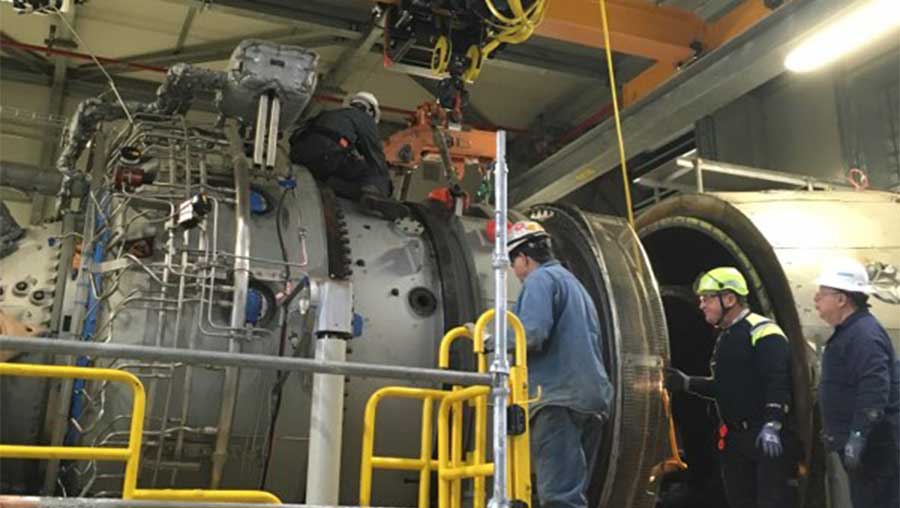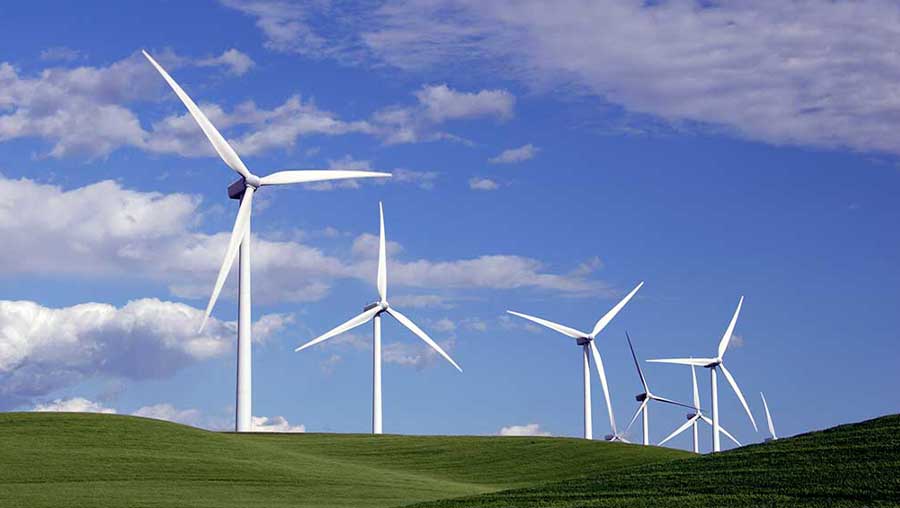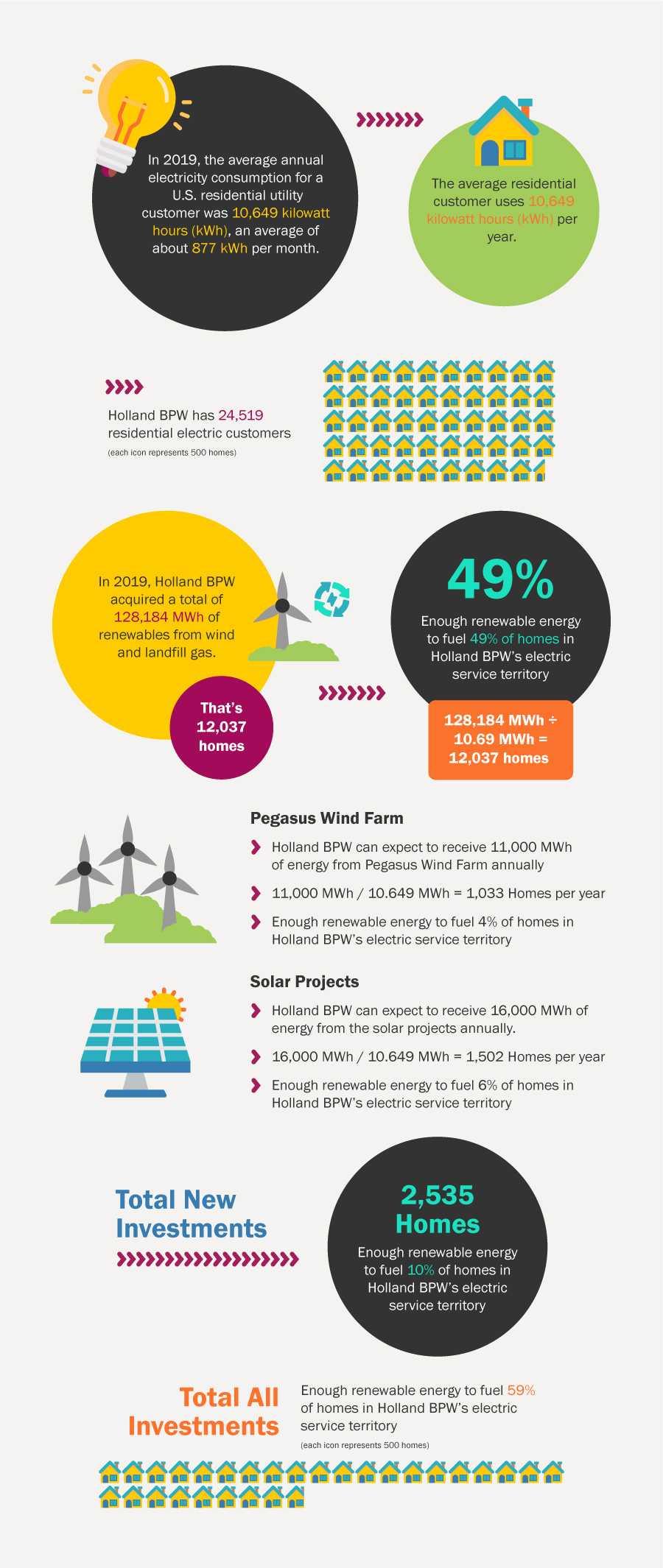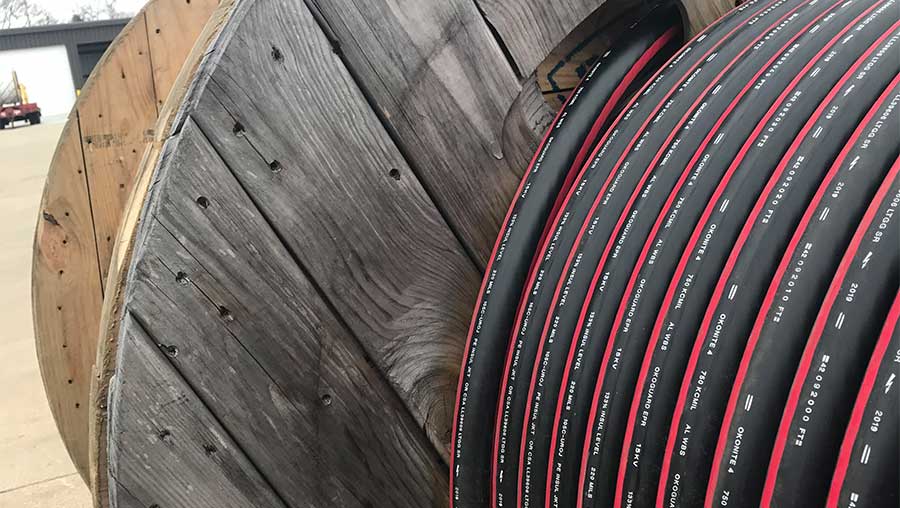2020 Update:
Electric
Electric
Holland Energy Park Maintenance Inspections On CTGs
Electric
Expansion in Renewable Energy Investments
Electric
Proactive Problem Solving Drives Plans to Replace Outmoded Underground Electric Cable

Holland Energy Park Maintenance Inspections On CTGs
Holland Energy Park (HEP) is in its third year of operation as Holland’s local baseload power generation resource. As time goes by, HEP’s performance continues to be a proven value to the community. Holland Energy Park produces approximately 900,000 Megawatt hours (MWh) of power each year using an ultra-efficient combined cycle technology for generating electricity.
Inside Holland Energy Park are two 50 Megawatt (MW) natural gas combustion turbine generators (CTG). The CTGs are huge machines that perform the initial step of Holland Energy Park’s power production process. After three years, the CTGs had accumulated 25,000 operating hours each and it was time for a maintenance inspection by Siemens, the manufacturer of the turbines. “Proper maintenance is a key to maintaining efficiency, safety and longevity of any machine, and the combustion turbine generators are no different” said Mike Radakovitz, Electric Production Superintendent.
“Proper maintenance is a key to maintaining efficiency, safety and longevity of any machine, and the combustion turbine generators are no different”
– Mike Radakovitz, Electric Production Superintendent
The maintenance inspection was a great undertaking that required a lot of coordination between plant staff and Siemens. There were 20-30 people from Siemens on site at Holland Energy Park at any given time during the inspection. The teams worked well together and the inspection went flawlessly. Each combustion turbine generator was inspected separately, taking 40 days to complete the full process. The combustion components were taken apart for inspection and repairs or upgrades were made where needed. Ultimately, the inspection improves the reliability and efficiency of the combustion turbine generators, allowing HBPW to continue to maximize their value to the community.

Expansion in Renewable Energy Investments
Holland Board of Public Works (HBPW) expanded investments in renewable energy sources from Pegasus Wind Farm, Assembly Solar 1 and Invenergy. With the additional investments in renewable energy, HBPW is making strides in decarbonization and the Community Energy Plan’s recommendations (CEP).
Holland Board of Public Works is a member of the Energy Services Project, administered by the Michigan Public Power Agency (MPPA). The Energy Services Project is a way for municipalities that are “members of MPPA to secure electric power and energy for their future needs” as stated in the Energy Services Project Transaction Authorization. Through this partnership, Holland Board of Public Works is able to secure renewable energy from the new wind farm and solar arrays. “These partnerships allow us to take part in projects that are making a large scale impacts in decarbonization, much greater than we could achieve on our own,” said Dave Koster, General Manager.
Pegasus Wind Farm
Pegasus Wind Farm is expected to provide HBPW with around 11,000 MWh of energy per year. On average, that is enough to power 1,033 homes. Pegasus Wind Farm achieved full commercial operation in June 2020. The Tuscola County project experienced multiple delays. HBPW originally signed a letter of authorization in 2016 and began to receive power from Pegasus Wind Farm in December 2019.
Solar Expansions
Holland Board of Public Works signed letters of authorization to participate in the MPPA’s power purchase agreement with the two largest solar arrays in Michigan, Assembly Solar I and Invenergy in 2018. Another agreement was signed in 2019 for Assembly Solar II. The new solar farms expect to provide HBPW with 16,000 MWh of energy per year, enough to power an average of 1,502 homes.
Holland Board of Public Works is proud to be involved in decarbonization projects that make an impact throughout the State of Michigan. “According to Ranger Power, ‘The Assembly Solar Project is expected to reduce carbon dioxide emissions by 394,000 tons annually in the short term – equivalent to the yearly emissions of approximately 77,000 cars’” (Dolinar, 2020).
| Location | Total MW | HBPW % | HBPW MW | |
| Pegasus Wind Farm | Tuscola County | 63 | 5.80% | 3.65 |
| Assembly Solar I | Shiawasee County | 90 | 11% | 9.9 |
| Invenergy Solar | Calhoun County | |||
| Assembly Solar II | Shiawasee County | 40 | 5.80% | 2.3 |
How Many Homes is that?

Resources
-
Frequently Asked Questions (FAQs) – U.S. Energy Information Administration (EIA). (2019). U.S. Energy Information Administration.
-
Dolinar, E. (2020, September 22). Construction finally underway on solar project in Shiawassee County. WEYI. https://nbc25news.com/news/local/construction-finally-underway-on-solar-project-in-shiawassee-county

Proactive Problem Solving Drives Plans to Replace Outmoded Underground Electric Cable
Holland Board of Public Works (HBPW) is recognized as a Reliable Public Power Provider (RP3) by the American Public Power Association (APPA). Taking a pro-active approach to problem solving is one reason Holland Board of Public Works succeeds in providing reliable public power. HPBW strives to address issues before major problems arise.
Electric distribution engineers look for trends in faults to identify issues. “We noticed a pattern of failure with a particular type of cable,” said Carl Thorwall, Electric Distribution Engineering Supervisor. “Every so often an underground cable fails. The faults occur on 1/0 cable that was standard for neighborhood underground distribution circa 1975-1995.”
Electric cable is made of layers of different materials. At the center, electric current travels through an aluminum core. Layers of insulation surround the core. A neutral layer of copper wire wraps around the insulation. Today’s electric cable has a protective jacket that covers the copper layer.
“When underground electric was first being installed, the protective jacket didn’t exist,” explained Thorwall. Underground electric cable was buried directly in the ground. Copper eventually corrodes over decades of exposure to moisture and dirt. Corrosion breaks down the insulation, electric voltage leaks and underground faults might occur. “We don’t see that happening with jacketed cable”, said Thorwall. To solve the problem, HBPW is replacing the old cable type with jacketed cable placed in conduit. “The conduit protects underground lines from shovels and speeds up our response time.”
HBPW identified 40 miles of cable to replace throughout the electric distribution territory. The full scope of the project will take five years to complete and a total of $6M. “Our plan is to replace eight miles per year, for an annual cost of $1.2M.”
“We take care to leave neighborhoods in good shape. There is not a lot of digging, so most of the work is completed without being noticed”
– Carl Thorwall, Electric Distribution Engineering Supervisor
The workflow of the underground cable replacement project is designed to cause as little inconvenience as possible to the community. HBPW notifies customers by mail when work and outages are scheduled in their area. A planned outage lasting an average of two hours is needed when a neighborhood is being wired. The conduit is placed underground by boring so driveways and yards are unscathed. “We take care to leave neighborhoods in good shape. There is not a lot of digging, so most of the work is completed without being noticed,” explained Thorwall.